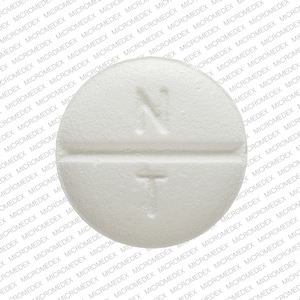Labetalol Side Effects
Medically reviewed by Drugs.com. Last updated on Feb 11, 2024.
Applies to labetalol: oral tablet. Other dosage forms:
Serious side effects of Labetalol
Along with its needed effects, labetalol may cause some unwanted effects. Although not all of these side effects may occur, if they do occur they may need medical attention.
Check with your doctor immediately if any of the following side effects occur while taking labetalol:
Less common
- Blurred vision or other changes in vision
- chills
- cold sweats
- confusion
- difficult or labored breathing
- dizziness, faintness, or lightheadedness when getting up from lying or sitting position
- shortness of breath
- swelling of face, fingers, feet, or lower legs
- tightness in chest
- wheezing
Get emergency help immediately if any of the following symptoms of overdose occur while taking labetalol:
Symptoms of overdose
- Chest pain or discomfort
- lightheadedness, dizziness, or fainting
- slow or irregular heartbeat
- sweating
- unusual tiredness or weakness
Other side effects of Labetalol
Some side effects of labetalol may occur that usually do not need medical attention. These side effects may go away during treatment as your body adjusts to the medicine. Also, your health care professional may be able to tell you about ways to prevent or reduce some of these side effects.
Check with your health care professional if any of the following side effects continue or are bothersome or if you have any questions about them:
More common
- Nausea
Less common
- Acid or sour stomach
- belching
- change in taste or bad, unusual, or unpleasant (after) taste
- decreased interest in sexual intercourse
- feeling of constant movement of self or surroundings
- headache
- heartburn
- inability to have or keep an erection
- indigestion
- lack or loss of strength
- loss in sexual ability, desire, drive, or performance
- not able to ejaculate semen
- rash
- sensation of spinning
- stomach discomfort, upset, or pain
- stuffy nose
Rare
- Burning, crawling, itching, numbness, prickling, "pins and needles", or tingling feelings
- diarrhea
- increased sweating
- vomiting
For Healthcare Professionals
Applies to labetalol: compounding powder, intravenous solution, oral tablet.
Cardiovascular
Common (1% to 10%): Edema, postural hypotension
Frequency not reported: Bradycardia, heart block, heart failure, hypotension, ankle edema, increase of an existing intermittent claudication, postural hypotension, cold or cyanotic extremities, Raynaud's phenomenon, paresthesia of the extremities, syncope[Ref]
Dermatologic
Uncommon (0.1% to 1%): Increased sweating
Frequency not reported: Systemic lupus erythematosus, rashes (e.g., generalized maculopapular, lichenoid, urticarial, bullous lichen planus, psoriaform, facial erythema, Peyronie's disease, reversible alopecia)[Ref]
Endocrine
Frequency not reported: Masking of the normal response to hypoglycemia (sweating and tachycardia); this may be important in some patients with diabetes mellitus[Ref]
Gastrointestinal
Common (1% to 10%): Nausea, dyspepsia, vomiting
Uncommon (0.1% to 1%): Diarrhea
Frequency not reported: Epigastric pain[Ref]
Genitourinary
Common (1% to 10%): Ejaculation failure, impotence
Frequency not reported: Difficulty in micturition (including acute urinary bladder retention)[Ref]
Hepatic
Common (1% to 10%): Transient elevations of liver function tests
Frequency not reported: Hepatic necrosis, hepatitis, cholestatic jaundice[Ref]
Hypersensitivity
Rare (less than 0.1%): Hypersensitivity (e.g., rash, urticaria, pruritus, angioedema, dyspnea), anaphylactoid reactions[Ref]
Immunologic
Frequency not reported: Antimitochondrial antibodies[Ref]
Metabolic
Very rare (less than 0.01%): Hyperkalemia[Ref]
Musculoskeletal
Frequency not reported: Muscle cramps, toxic myopathy[Ref]
Nervous system
Very common (10% or more): Dizziness (11%)
Common (1% to 10%): Headache, taste distortion, vertigo, paresthesia, scalp tingling
Uncommon (0.1% to 1%): Drowsiness
Frequency not reported: Tremor[Ref]
Ocular
Common (1% to 10%): Vision abnormality
Frequency not reported: Dry eyes
Postmarketing reports: Intraoperative Floppy Iris Syndrome (IFIS) observed during cataract surgery[Ref]
Respiratory
Common (1% to 10%): Nasal stuffiness, dyspnea
Frequency not reported: Bronchospasm, interstitial lung disease[Ref]
Other
Common (1% to 10%): Fatigue, asthenia
Frequency not reported: Positive antinuclear factor[Ref]
Psychiatric
Frequency not reported: Depressed mood and lethargy, hallucinations, psychoses, confusion, sleep disturbances, nightmares[Ref]
More about labetalol
- Check interactions
- Compare alternatives
- Pricing & coupons
- Reviews (27)
- Drug images
- Side effects
- Dosage information
- Patient tips
- During pregnancy
- Drug class: non-cardioselective beta blockers
- Breastfeeding
- En español
Patient resources
- Labetalol drug information
- Labetalol (Intravenous) (Advanced Reading)
- Labetalol (Oral) (Advanced Reading)
- Labetalol Tablets
- Labetalol Injection
Other brands
Professional resources
Related treatment guides
References
1. Cerner Multum, Inc. UK Summary of Product Characteristics.
2. Cerner Multum, Inc. Australian Product Information.
3. Product Information. Labetalol Hydrochloride (labetalol). Watson Pharmaceuticals. 2016.
Further information
Always consult your healthcare provider to ensure the information displayed on this page applies to your personal circumstances.
Some side effects may not be reported. You may report them to the FDA.

